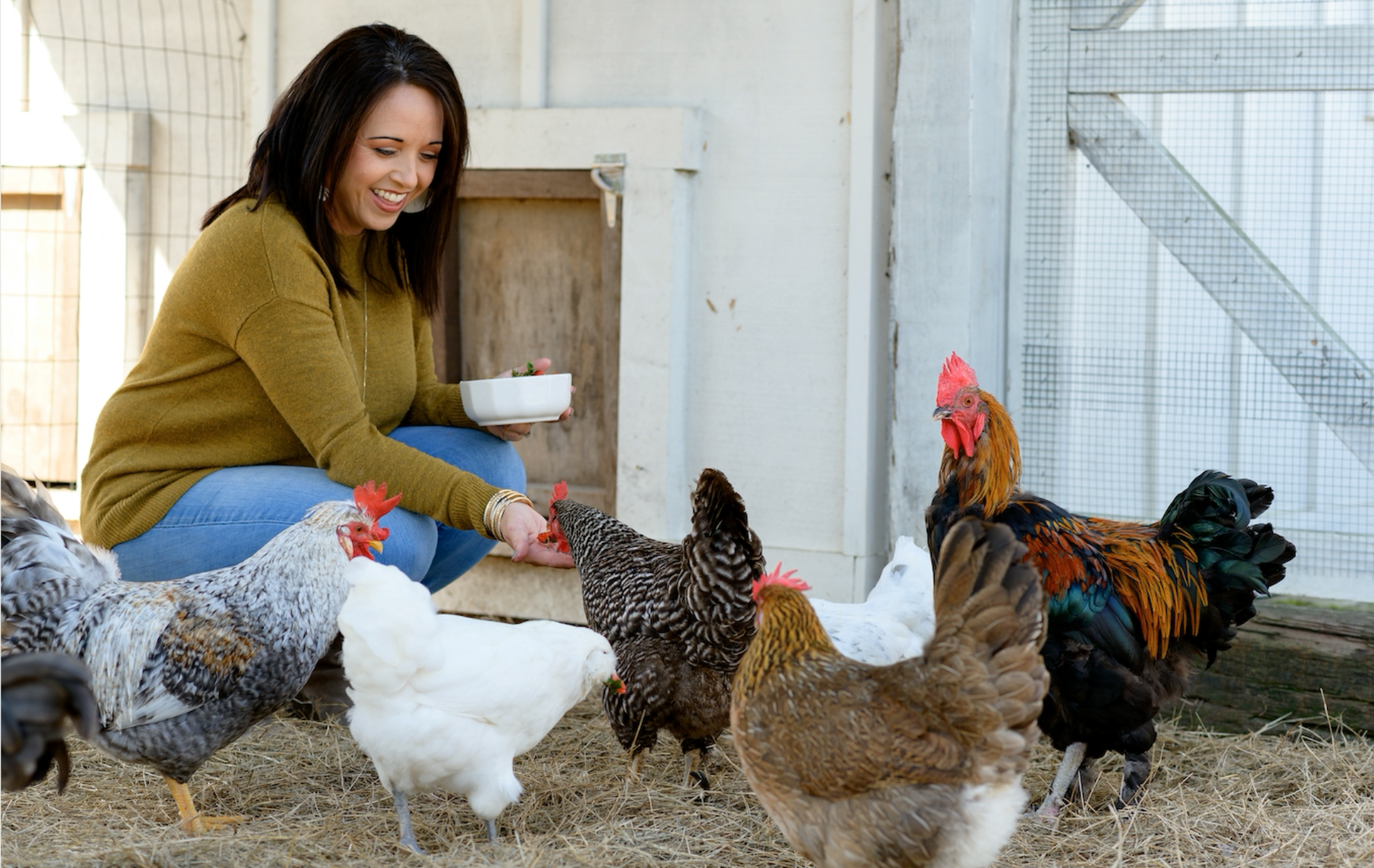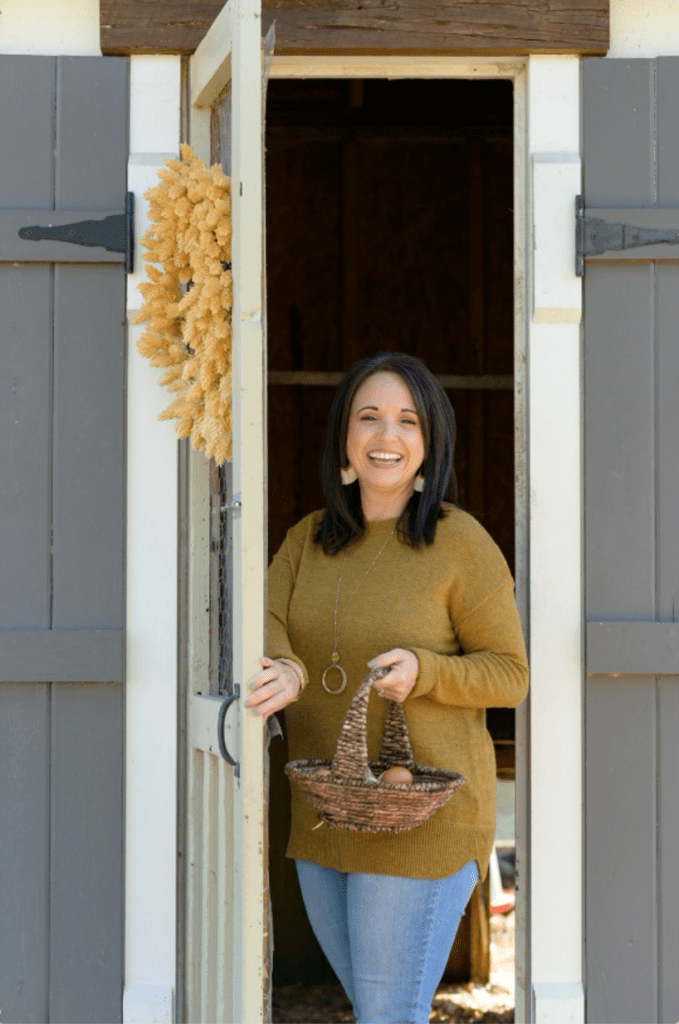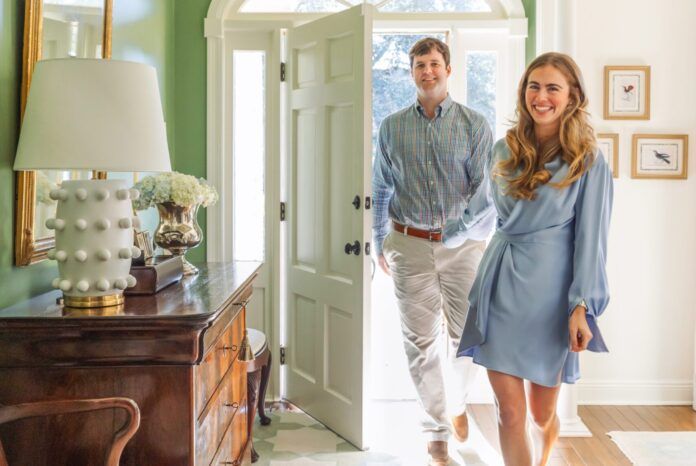Ready to hop on the chicken trend? Here’s how to do it the right way
If you saw this feature in our October issue, you know we have been giving chickens a lot of thought lately. They’re no longer relegated to rural life. With coops popping up in backyards across the city, we’re declaring these feathered friends the hottest house–or, really, backyard–pet of 2021 (you heard it here first).
But if you’re like us and have little to no experience when it comes to the country (think Paris Hilton in The Simple Life), running out to the nearest Tractor Supply and requesting eggs likely isn’t the best idea. And sure, Google is a great resource, but we prefer dealing with real people. And that real person is Wild Child Farms owner and fellow chicken enthusiast Kellye Jeansonne.
She’s had flocks of her own for years, but with the establishment of her Wild Child Farms business, she has also helped countless families add chickens to their roost. The way she approaches flocks, though, is different than one might expect. Her goal is to find the beauty–in the chickens, the eggs and the experience as a whole.
“I like to say that it doesn’t have to be your grandma’s chickens,” Jeansonne says with a laugh. “We have such an opportunity to take things that are as old as time and make them fit our lives now. I want to find the beauty.”
Jeansonne specializes in what she calls “instant flocks.” These are groups of chickens that are carefully curated and raised by Jeansonne herself to fit the specific needs and desires of her clients. From the time they are hatched, she is watching temperament and helping the chickens grow as a group. In addition, she also orients them to outside stressors like dogs in order to decrease the chance of failure when the birds get to their new home.
“I understand the time it takes to make a successful flock,” she explains. “My goal is for people to be collecting eggs the day after they bring their chickens home.”
But she isn’t talking about plain white eggs that you find at the store. For her, creating a “rainbow” egg basket is the ultimate goal and one that she hopes to impart upon everyone who gets a flock from her. “I’m more of a boujee chicken lady,” Jeansonne remarks with a laugh.
https://www.instagram.com/p/CONpqfyn5xT/?utm_source=ig_web_copy_link
Breeds like French Marans, Ameraucanas and Barred Rocks (known as the “lap chickens” of the world) are mainstays in Jeasonne’s flocks, creating baskets filled with chocolate brown, sky blue and even pink eggs each morning. These chicken varieties are also known for their temperament and are great for free ranging in the backyard and getting to know as a true pet.
“There is such a natural and pure enjoyment that comes with keeping chickens,” she says. “What you give to them, they give back tenfold.”
For those interested in Jeansonne’s instant flock program, or working with her on any chicken-related project, now is the time to reach out. While you won’t get your chickens until the end of next summer, Jeansonne will start hatching future flocks in January. Click here to get started with the process and read on for a few tips from Jeansonne about chickens and their care:
- Find the right flock size. Jeansonne doesn’t suggest flocks of any less than 4, but 6 is the “sweet spot.”
- If you can, get a rooster. “They are so undervalued,” she says. “We have so many predators, and roosters protect the flock. But also, they are true gentlemen. It’s impossible not to smile when you see them interact with the hens.” However, according to Jeansonne, it’s important to get one with a good temperament, which she ensures through her process.
- All it takes is five minutes in the morning and five at night. “They really take care of themselves for the most part,” Jeansonne explains. “But you will want to spend more time with them. I guarantee it.”
- It doesn’t cost a lot. Standard chicken coops run about $200, and high-quality feed is just $20 for 50 pounds.
- The key is to let them be who they are. “You need to let them out and give them space,” she says, “and then their true personalities will show. That’s the best part. They become part of the family.”
This article originally appeared in an October 2021 edition of inRegister@Home.














